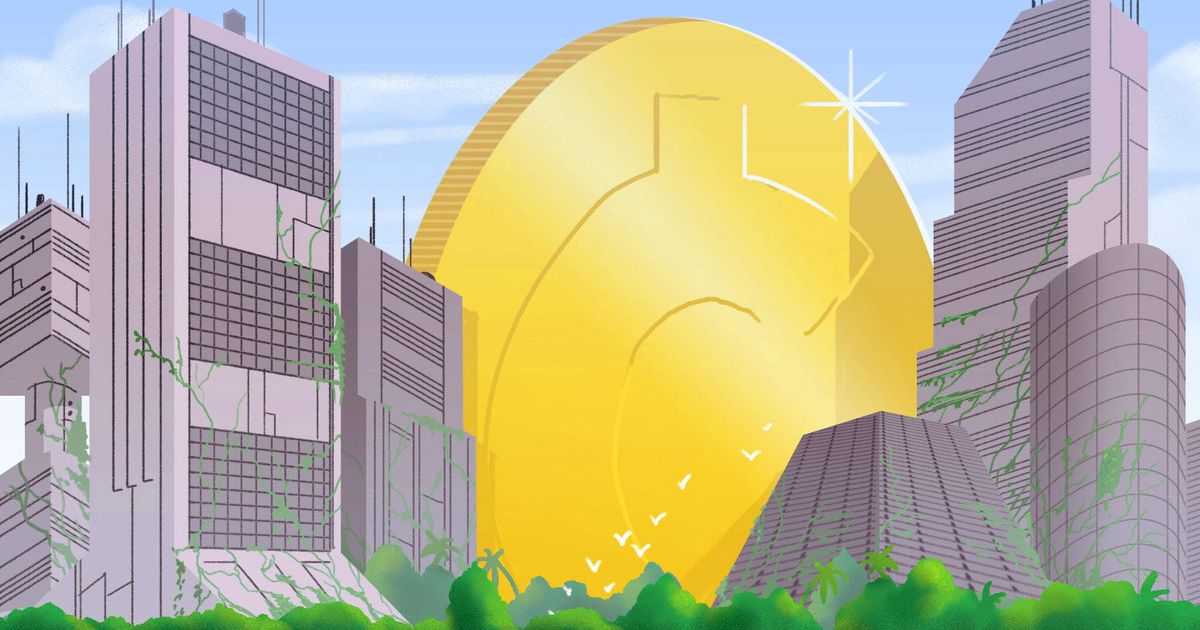
Dear 22nd century,
When last we checked in on Kim Stanley Robinson, the famed author and veteran oracle of the 22nd century was smashing the dreams of science fiction fans everywhere by explaining why it won’t make sense for you to travel to the stars in generation ships. Now, several books later, Stan (as he’s known) has made up for that disappointment with a more positive look ahead on our home planet — one with a starring role for cryptocurrency that may look unlikely to us, but normal to you.
The Ministry for the Future serves as a blueprint for how we can throw climate change into reverse and actually reduce the amount of carbon in the atmosphere over the next three decades. If we follow it, this blueprint could make your Earth no warmer than ours. If we don’t, it could be almost as uninhabitable as Aurora, the abandoned planet in his cautionary interstellar tale. Ministry is also Stan’s last work of fiction for the foreseeable future. (Next up, a nonfiction book on hiking the High Sierras near his home in Davis, California.) So the author who’s been warning of climate change in his books since the 1990s decided to drop the mic in this one.
It opens with the most shocking example of what we’re up against, an event that scientists fear is increasingly likely in our lifetimes: a so-called “wet bulb” heatwave, where extreme humidity and extreme temperature combine to kill millions in days. “It wasn’t quite rage, but intense irritation,” says the mild-mannered Stan of the motivation behind Ministry. “There was a crowd of intellectuals talking about adapting to a 4-degree Celsius temperature rise, because they hadn’t noticed this wet bulb limit on what we can adapt to. It struck me as inexcusable, stupidly negligent or negligently stupid, to hold that position.”
To nudge the global thermostat in the right direction, Stan has his Ministry — a still-fictional enforcement arm of the Paris Accord — throw everything but the kitchen sink at climate change. Every geoengineering project that cautious scientists balk at in our era, such as planes seeding the sky with reflective particles, goes in the mix. Stan became a kind of one-man clearinghouse for respected scientists with outlandish ideas. Such as the glaciologist who thinks we might be able to pump groundwater up through Antarctic glaciers to stop their melt rate increasing, re-freezing the water at the top, but dare not publish for fear of his career. Science fiction can help make the concept more acceptable, as it has done for so many weird ideas in the past (See also: Star Trek communicator, cellphone.)
But there’s one climate change-fighting idea Stan came across, courtesy of an engineer in Australia, that stands head and shoulders above the rest. Indeed, it’s one that makes our pursuit of the rest more likely, by hitching itself to basic human greed. It’s called Carbon Coin in the book, a Bitcoin-like currency that the Ministry gives out for carbon sequestration — that is, any project that sucks CO2 out of the air, whether it’s carbon capture or farmers rewilding their fields — at a rate of one coin to one ton. Oil companies get coins if they stop being oil companies, basically, leaving their assets in the ground for a century or so. Coins can then be bought and sold on currency exchanges like any other.
The key point is that the world’s central banks agree to back it, buying Carbon Coins on a schedule that slowly raises their price. The planet-saving coin thus becomes the safest investment in history, even more so than U.S. Treasury bonds. Our entire economic system becomes as motivated to fight climate change as it is currently motivated to ignore it.
“Really, I think it is crucial,” Stan says. “Can we pay ourselves to do the right work, rather than wreck the biosphere? Can it become a way of making a living, for millions of people to do the right thing?”
